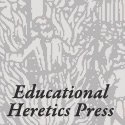Educating with Museums: A Global Resource.
Edith W. King and Peter Humphreys
As the title of this article indicates there is an outstanding, often free, source of inspiration and content for education programs– museums, art galleries, great country palaces, estate homes and sites of social historical importance. Museums include the fine arts and decorative arts, historical and scientific. They are repositories of culture and traditions. To the dismay and horror of Brazilians the destruction in the 2018 fire totally decimated the National Museum of Rio de Janeiro. This national museum held the artifacts of now-vanished Amazon tribes, historical dinosaur fossils and many more cultural and historical collections. It is hoped that the unthinkable devastation of this important national museum is not repeated elsewhere.
However, the shocking loss of this national treasure sent a message around the world that a nation’s cultural repository can suddenly go up in flames. These wide-ranging settings provide us with invaluable resources through permanent and short-term exhibits. It is a significant educational goal to familiarize students with museums, their exhibits, collections, services and personnel. These institutions offer contributions for teaching the language arts, social studies, science, arts and crafts at all educational levels. Talking with directors and curators of local facilities could bring forth recommendations for learning about the geographic and multicultural heritage of the area and the community. Indeed, in the UK even quite traditionally conservative organizations like the National Trust have tried hard to create lenses on their assets which chart, value and enhance the contributions of groups previously ignored in the white, male elite interpretations that have habitually dominated.
Peter Humphreys points out that over recent years UK mainstream (state) schooling has engaged less and less in visits to these cultural assets. As an educator he considers these resources as integral to an education and should be regularly embedded into school life. Humphreys notes that the reductionist curriculum, the pace of learning, workload and cost has relegated visits to places like museums a rarity. In contrast, he considers those in alternative education settings, those who home educate, prioritise frequent exposure to learning with these authentic and immersive experiences.
He believes the whole range of museum visits and experiences are central to any learning journey. Among his favorite sites for visitations is Wightwick Manor and Gardens, the stately home just 30 minutes to the west of Wolverhampton. Wightwick, showcase of Tudor style architecture, is an eminent Victorian mansion of the Mander family, brimming with lovely artifacts and craft designs. It is an example of the art-filled country life of late 19th century Britain. (www.nationaltrust.org.uk/wightwick-manor-and-gardens) Just a few of the outstanding collections displayed in Wightwick’s “Great Parlor”, two more reception rooms and five guest bedrooms, are impressive oil and watercolor canvases by renown British and European artists, extraordinary carved furniture and exceptional collections of china and silver. Wightwick Manor, originally built as a family’s home, offers students direct evidence of the historic rise of 19th century manufacturing and wealth creation in the Midlands. This stately home experience can provide a window on the global significance of local culture and heritage, on the social and cultural issues of the time compared to the present. And close by is the highly regarded Black Country Living Museum, depicting the Black Country’s history in the birth of the Industrial Revolution. These institutions give educators opportunities to enrich learning about the Industrial Revolution and the important role the Black Country of England played during this time in world history. It’s all fertile territory for exploring all the current global issues in developing nations, the rise of the new industrial giants like China, pollution, migration, slavery, workers’ rights and social justice and so on.
You can consider how museums become resources for your learners through informing about ethnicity, self-identity and group affiliations. These institutions of all types are accessible online as well as for visitations. It is helpful to meet and communicate with curators or directors to discuss with them your interest in ethnicity and the multicultural heritages of the geographic locale and population. Ask about exhibits on various ethnic groups and heritages, either on display currently or planned in the future. Projects to follow up from these contacts or visits include the inspired students’ artwork, booklets, thank- you letters, internet searches and exchanges. Significantly, what might at first be considered as sites of the privileged and elite world view can be seen as a resource for exploring the social and cultural contexts of our ancestors (including immediate family members particularly grandparent and great grandparents). With craft, imagination and integration of subject focused approaches its easily possible to co-create research projects and whole curriculum approaches on the foundations of such visits.
Edith King describes the specifications of one such U.S. example, the Wheelwright Museum of American Indian Art. King utilized this resource in past years for ethnic and cultural education programs with teachers and administrators. The Wheelwright Museum of the American Indian is located in Santa Fe, New Mexico. Its changing exhibitions feature living artists, traditional arts and crafts of the Navajo and other Native peoples of New Mexico and the American Southwest. (email: info@wheelwright.org) The original Wheelwright building, designated an historic landmark, is listed in the U.S. National Register of Historic Places. Not as old a structure as Wightwick Manor, the Wheelwwright’s original building has a noteworthy history for the Navajo and the non-native population. The Museum’s holdings include jewellery, metalwork, carvings, basketry, folk art and textiles of the Native peoples of New Mexico, as well as the U.S. and Canada. Additionally, the Wheelwright Museum publishes impressive catalogues and other exceptional fine arts books on their exhibits. This museum is also available for research projects. (King’s Interview with J. Batkin, the director).
In this article we have attempted to bring focus to the importance of museums and other cultural and social assets for educating students in our hectic and torment-filled world. We remind educators and families that when adults and youngsters are constantly being besieged with breaking news of natural and human caused disasters there is even more need to identify trusted resources for assistance and support. Young people should become aware of the issues and challenges of climate change, huge migration of desperate people, and wide-spread poverty. These global assets are a means to help us with undertaking these responsibilities. They are rich and fertile ground for getting to grips with issues-based learning, and with the socio-political dynamics of historical and contemporary life.
Educational researchers will be able to see that this territory can provide varied lenses on learning, perspectives on curriculum and comparative narratives on mainstream and alternative educational approaches.
References and Resources
Scherer, B.L. 2018, “Eminent Victorian” Antiques, (May, June, pp. 88-95.)
Wheelwright Museum of the American Indian: email: info@wheelwright.org
Wightwick Manor and Gardens: www.nationaltrust.org/wightwick-manor-and-gardens









